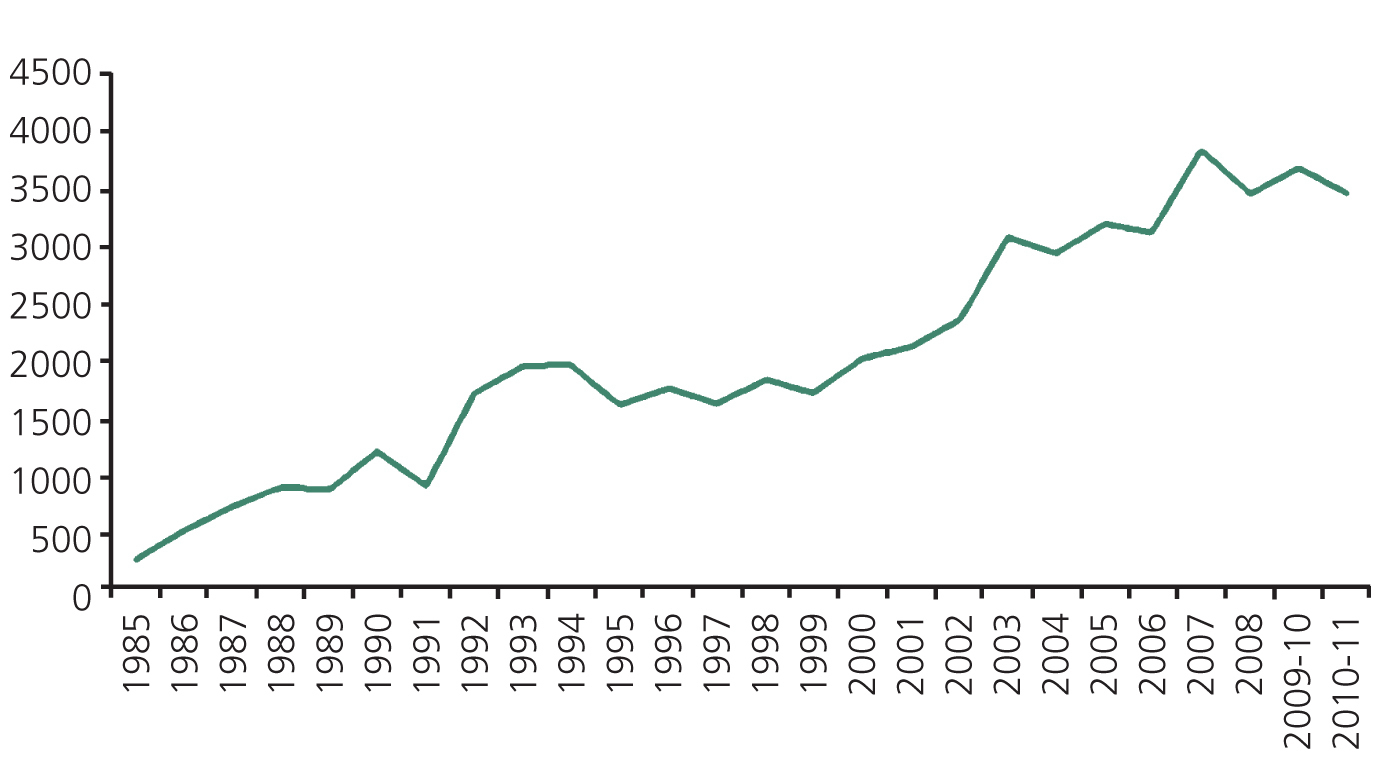To the Editor,
What has happened to the specialty of nephrology?
In recent years, the Spanish Society of Nephrology and the National Nephrological Commission have voiced enormous concern regarding our specialty and the possible loss of attractiveness for young doctors.1-3
An analysis of the score of MIR (internal medicine residency) placements between 1985-1986 and 2008-20093 shows a decreasing tendency for the mean position in the test score results for doctors who choose nephrology: this number has gone from position 253 to 3457 during this time period. Although the placement programme and the number and percentage distribution of placements for each specialty have varied over the years, the results from the last two years confirm this tendency, since the mean score of doctors who chose nephrology in the 2009-2010 year was 3679, and 3461 in the 2010-2011 year (Figure). Furthermore, the mean annual score for the exam decreased from 435 points to 377 points over this time period, with the mean score in the last two years being 311 and 332 points, respectively. However, in recent years, the placement of the first student to choose nephrology has improved (numbers 149, 228, and 387, versus 1429 in 2007-2008). There is also a growing trend for female professionals in this specialty, with a male:female ratio of 0.54 and 0.57. The MIR placement for the last student to choose nephrology has gone from 937 in 1985 to 2485 in the 2008-2009 session, and was 5175 and 5255 in the last two years. However, the specialty of nephrology has a low drop-out rate once doctors have started training,4 and has one of the highest rates of foreign applicants.5
According to a study performed during the 2010-2011 year by the research centre of the medical association of Granada, only six specialties have more than 50% of foreign applicants: immunology (71.4%), thoracic surgery (70.6%), cardiovascular surgery (57.7%), physical education medicine (53%), nephrology (52.7%), and otorhinolaryngology (50.6%). In seven specialties, this rate does not even reach 15%: paediatrics (10%), preventative medicine (12.3%), clinical chemistry (12.9%), psychiatry (13%), neurology (13.6%), obstetrics and gynaecology (15%), and legal medicine (15%).5 This also holds true in medical training in the USA, where foreign doctors account for 41% of nephrology applicants.6
The proper approach to the issues facing nephrology in Spain is complex and multifactorial,1-4,7,8 and the methodology for making nephrology more attractive to young doctors does not exclusively depend on us. However, assessing the most current data regarding this situation may aid in improving this situation.
Conflicts of interest
The authors affirm that they have no conflicts of interest related to the content of this article.
Figure 1. Mean score of MIR placements for nephrology in Spain, 1985-2011







